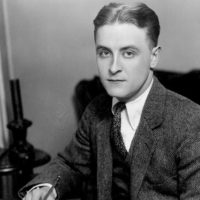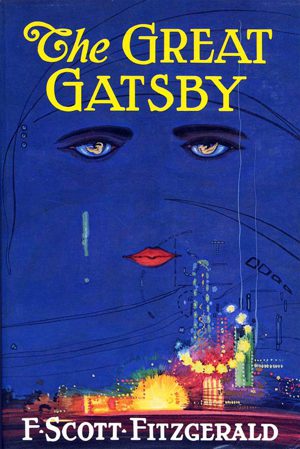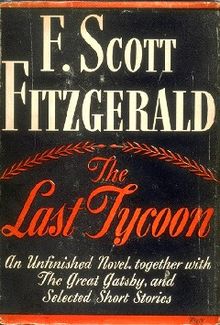I’ve taught novel and short story writing going on fifteen years now and I see too many writers grabbing at first person because they think it’s easier. First person isn’t easier—nor is it harder. It’s simply a choice and if a writer uses it, one hopes it’s the right choice for that narrative. As William Gass used to say (maybe he still says it—it’s not like I follow him around, stalking him for info), every choice a writer makes offers that writer opportunity and obstacle. And, as my bud Steve Almond says (he does still say this, though I don’t have to stalk him to know it) “Writing is decision making. Nothing more and nothing less.”
And when a writer has chosen to tell a narrative in first person, they’ve made a choice that offers them plenty of opportunities, among them:
- Immediacy.
- The intensity, drive and wonderful rhythms and word choices of human speech,
- The chance to exploit and explore a single voice and no fear of shifting point of view at the wrong time (since they’ve chosen to tell the story in only one POV)
Among the obstacles inherent in first person?:
- You’re trapped with that single voice and you’ve offered yourself no variation in POV—so it better be a compelling one in every single word choice (though this is true of second and third-person, as well). But you run the risk of a redundant voice.
- When a reader sees the opening line is in first-person, there is a tacit contract with the reader (often an unconscious one, understood simply from hours, days and years of exposure to narrative) that the text will be contained to that single POV. This, of course, assumes it’s not a multiple first-person narrative, like As I Lay Dying, or a novel that will shift—nearly always unsuccessfully—from first person to third person at some point, as in Hemingway’s problematic (primarily because of its lack of focus caused by the shift between first and third person) To Have and Have Not.
- As a result of the reader knowing the POV will stay in the mind of your first-person narrator, there is the accompanying tacit contract—that no scene will occur without the narrator being present to observe/participate in the scene.
This last obstacle is a tricky one for a writer. It’s a maddening limitation you’ve given yourself, at times. How to get in crucial information that your narrator isn’t present for? But, like all forced limitations (from the sonnet to the lipogram to the 1/4/5 blues), it offers the attentive writer a chance to come up with interesting and creative problem-solving.
One of the best at overcoming the limitations inherent in first-person was F. Scott Fitzgerald. In both his most accomplished novel, The Great Gatsby, and in his incredibly promising, yet sadly unfinished The Last Tycoon, Fitzgerald applies a twist to traditional first-person and uses a technique I call Flexible First Person. What is Flexible First Person? It’s really just a technique a writer can use within the confines of traditional first person. It’s not a POV of its own, but more of a subset technique within a POV choice. It’s the technique of a writer who realizes there are a multitude of ways that we (who live in first-person singular—most of us, at any rate) get information about other people and events.
Think about it—there are plenty of things we know about in life that we weren’t present for. People tell us things, we listen to the radio, we read, we watch TV and check the Internet (though the last two weren’t available to Fitzgerald) and, perhaps most importantly, we imagine what other people are thinking.
And it’s this realization of the narrator’s imagination that shows up in one of the most famous scenes in Gatsby, in which Nick Carraway imagines Gatsby’s murder at the hands of Tom Wilson (a scene that has already taken place and one Nick was not there for). Not only does he use multiple hearsay (what the butler tells him about Gatsby getting in the pool for the last time of the season and what the police tell him about Wilson shooting Gatsby and then himself), but he imagines Gatsby’s dying thoughts. We get Nick, thinking/imagining Gatsby waiting for Daisy’s call where he hopes she’ll leave her husband and run away with him:
…I have an idea that Gatsby himself didn’t believe it would come, and perhaps he no longer cared. If that was true he must have felt that he had lost the old warm world, paid a high price for living too long with a single dream. He must have looked up at an unfamiliar sun though frightening leaves and shivered as he found what a grotesque thing a rose is and how raw the sunlight was upon sparsely created grass…
Notice all of the qualifiers: I have an idea, perhaps, If that was true, and he must (twice). Because it’s the narrator imagining this, we get not only the narrator’s conclusions on the end of Gatsby’s life, but a sense of immediacy of this ending as seen/realized by Gatsby, even though the narrator is absent and there’s no way he can actually know what Gatsby felt and thought at the end.
We spend an enormous amount of our lives (at least I do, and my friends do—but maybe that’s because my friends are mostly addicts and writers, who spend a lot of time in their heads) thinking about other people, their motives, their desires and their opinions. Yet, I seldom see student writers taking advantage of this when they choose to write in first person. This is an incredible technique not used often enough.
There are more pedestrian ways to get in scenes that the narrator’s not there for. For instance, in The Last Tycoon, the narrative is in the first person, told by Celia Brady. Then, several chapters in, we get the entire first date and romance between Monroe and Kathleen, shown to the reader in what seems like third person (minus interiors—what’s known as camera-view third-person, where we get actions, but not thoughts in third-person), and then we’re told that Celia had learned about this entire encounter from someone intimate with the characters in the scene—via hearsay. Then, the first-person narrative continues with “This is Celia, taking up the story again.”
This is much less poetic than the death scene in Gatsby, but it’s effective and it offers readers (and writers) another example of the Flexible First Person where the writer explores creative and interesting ways of getting crucial information to the reader.







14 responses
Great essay and timely. I’m a mid-sentence, tense changer and I think the impulse is to add some texture but I only create confusion. I’ve got to pick up “Great Gatsby” and give it a whirl. Thanks for the terrific essay, Rob. I’m glad I didn’t have to stalk you-my favorite writing teacher ever-for the info.
Excellent Point of View. I’d go all first person on ya, but I haven’t finished my morning coffee yet. Thanks Rob.
Awesome insight, Rob–thanks.
Brilliant as always Rob. I’ve been re-reading Treasure Island lately, which has that infuriating part where Stevenson switches narrators at the height of the action because he couldn’t figure out any other way to fill the reader in on details Jim Hawkins wasn’t privy to. It almost ruins the book…
I think you miss an essential part of the ‘technique’… what is imagined says as much about Nick as it does about Gatsby. The ways that Fitzgerald draws attention to the imagined and speculative nature of how the death happened, and then the rendering of its particulars with such immediacy and poetic intensity is also pointing us at Nick’s need to know and understand and make sense of it. In other words, the technique is also the scratch on the lens that indicates the nature of the lens, that gets at the narrator’s need.
That’s a quick, incisive summary…I also like Copperman’s comment, because I’ve always puzzled over why Fitzgerald used a narrator for “Gatsby”. I’d assume distance (he could not, for example, have written from Gatsby’s POV) but I’d like to re-read, as I recall a class issue was involved. But distance/unreliability are important…I’d cite Fowles’ “The French Lieutenant’s Woman” (and Harold Pinter’s amazing cinematic translation) as a great example.
I read an agent’s blog who once said he won’t read first-person work, as he considers it limited and juvenile. I find this guy particularly irritating (I read it to see the inside limit of what an agent will tolerate), but this really surprised me. My first novel was in the classic 3rd person objective (I did grow up in Hollywood, so it’s all a movie to me…) but I’ve noted that nearly everything I’ve written since is first-person. Part of the fun, as Sarah Palin will tell y’all, is speaking in tongues.
Michael-
I totally agree. I didn’t go as in depth as I could have and one of the truly cool things about having the narrator imagine the scene is that you get a dual-reveal of both narrator and whatever’s being viewed. That same applies whenever your (our) narrators make judgments/think about other people/talk about other people. What they have to say reveals (at least) as much about them as it does their subject. It does point to Nick’s need to know and understand AND it reflects more Nick’s world-view (ultimately) than Gatsby’s. Thanks for making a good point.
Great essay , Rob. As you know I am a visual artist who writes images in beeswax and pigments and stuff from off the ground that no one thinks of as part of a story. I wonder as I read this as to whether the mechanics of writing (so deftly explained here), could ever apply to the narrative done in abstraction or whether the content in such work would ever be interpreted as anything other than first person. Could be ‘apples vs oranges vs pomegranates’, or the dividing line in method between images conjured by words vs the actual visual stimuli presented in any form of visual still imaging. I think too much. See you at Red Arrow.
So was that a conversation killer or what? Okay, okay, I’m outta here, you guys just talk amongst yourselves.
I’m good. no. Really.
Rob–
Dual-reveal, I think that’s exactly it (especially with narrator’s judgments… that what they think and judge gets at them). Didn’t mean to sound negative, either– it’s just that I’ve spent far too much time with Gatsby, a book I read again each year. The damn thing just ruins me every time, it’s so unbelievably lapidary. Not to mention that Fitzgerald’s lyric talent is enough to make anyone want to give up.
Ric-
What I know about visual art could fit in…well, something small. A bonnet. Or thimble 🙂 BUT, it seems to me it (and this is, again, uneducated guesswork) that it’s a direct communication between/among artist, audience and their shared experience with art. That is all art (writing, music, dance) is in dialog/communication with both the art that came before it/influenced the artist AND the audiences’ history with their own dialog with the art. So, it seems to me, painting/visual art (done by one person, not collaborative visual arts) are sort of by default First-person, no? You know a lot more about it…can you think of a piece of Third-person visual art? Would be interesting to see/think about.
Michael-yeah, Gatsby is one of my “once a year” books, too. Besides teaching me a lot about writing, the prose just haunts me in its beauty. He nailed it on that book. Have you read “Trimalchio”–the version BEFORE the final version (the first version Maxwell Perkins saw before Fitzgerald did a final polish)? It’s REALLY interesting for those who haven’t read it (I’m guess Michael has, for some reason)…like a demo of a song you love. REALLY close, but subtle, interesting differences. The Jordan Baker affair is explored a LOT more. The start and end are much the same, but the middle has some significant differences. A cool read for people who admire GATSBY.
Thanks for reading and the comments, gang.
Excellent as always and helpful to consider as I decide which POV to use for the next novel. Thanks, Rob.
Thanks for responding, Rob I have thought about it a bit and I have hit an area of ‘what-person?’, if you will, in my pondering. Such as, when an artist depicts a legend or fiction derived from written literature, the visual artist or even performer is communicating an interpretation based on literal narrative. Does this depiction not contain the imagery rendered by more than one source? Is it ‘Xerograph-ied’ from the original intended imagery or is it solely the visual reference’s first person craft of their own making? I know, it may be a pointless discussion in some ways, but, I truly wonder how it might be applicable. Perhaps this thread is a now wrung out and the topic could be better discussed over a couple of Perriers.
I like the term “flexible first person POV.” Whether a new coinage or not, it conveys perfectly the point of view in my just-published novel, “Missing Persons.” The first-person narrator (a man of around 60), drawing on stories he hears, or overhears, as an adult, attempts to unearth family secrets held from him since childhood, events to which he was not witness. When memory (imperfect, subjective and selective as it is) is wholly absent, imagination must take over.He constructs or reconstructs, a twisted family history, telling stories(some cast in 3rd person) that imaginatively render the what-it-must-have-been like, or the what-must-have happened.
Click here to subscribe today and leave your comment.